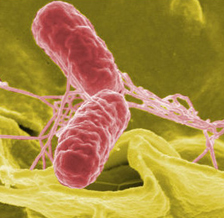Egg producers may struggle to control Salmonella following cage ban

Egg producers in the European Union may struggle to control Salmonella when the EU ban on battery cages comes into force in January 2012, according to pathogen elimination and mould control company, Anitox Corporation.
Alan Doyle, the company’s European Business Development Manager, emphasises that despite data published by the European Food Safety Authority (EFSA) in 2011 showing that Salmonella control programmes in laying birds have been highly successful (17 Member States met their 2009 reduction target for flocks of laying hens and the overall incidence of Salmonella in countries which operate control programmes fell from 3.5% in 2008 to 3.2% in 2009) the industry simply cannot afford to be complacent.
“The need for caution was highlighted in a recent study in Belgium to quantify the effects of housing systems on the spread of Salmonella infection within layers and internal egg contamination,” said Doyle. “The study found that, compared with traditional battery cages and furnished cages, aviary and floor housing systems pose a greater risk. Bird-to-bird transmission of Salmonella enteritidis was slightly higher, while a higher number of eggs were contaminated internally by Salmonella.
“The results suggest that a shift from conventional to alternative housing systems for laying hens should be accompanied by a keen concern for optimising Salmonella surveillance programmes. It is critical, therefore, that existing control plans are maintained and additional care is taken to minimise within-flock transmission of Salmonella, which is a persistent problem that cannot be entirely eradicated and poses a major threat to humans who consume contaminated animal products.
“EFSA identified Salmonella spp. as the major hazard for microbial contamination of feed and although feedstuffs for layer, broiler, duck or turkey parent/grandparent stock are sometimes heat-treated in an attempt to reduce the problem, this process may not kill all pathogens. It also significantly increases the cost of the feed, has a high carbon footprint, can damage vitamins/nutrients and has no residual effect, so unless other measures are implemented, re-contamination can occur in the mill, during transport or on the farm. In another recent study, the authors found that non-pelleted feed e.g. mash, was eight times more likely to be contaminated (with Salmonella) than pelleted compound feed.”
Source: Anitox













